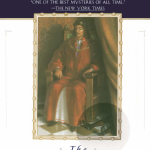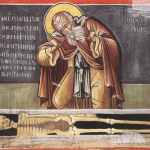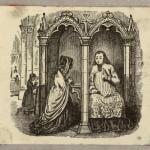I’ve been aware of story-teller H. Rider Haggard since I was a kid, when my mom bought me a copy of King Solomon’s Mines to take with me on a trip. Alas, the back-cover blurb put me off, and it was several years before I actually read it; but when I did I was enchanted. He’s also the author of She, and is thus the source of the title “She Who Must Be Obeyed,” applied by John Mortimer’s Rumpole of the Bailey to his beloved (?) wife.
During a recent Amazon binge that was wholly the fault of Tom McDonald, I ended up with Delphi Classics’ Works of H. Rider Haggard. I’d been aware that there were a number of novels concerning Allan Quatermain, the hero of King Solomon’s Mines (I’d read three of them), but was gobsmacked to discover that there are eighteen all together. (The book has fifteen of them; the other three are still under copyright in the United States.) Moreover, the book has them in order of internal chronology. OK, sez I. I’m up for it.
To those who don’t know what I’m talking about, H. Rider Haggard was an author of adventure stories, mostly set in Africa, during the height of the British Empire. In those days, Africa was still largely the Dark Continent: little known, little explored, where anything could happen and where lost civilizations might lurk behind every mountain range and across every impassible desert. The folks who wrote the weekly movie serials that inspired Raiders of the Lost Ark were probably weaned on Haggard’s tales…or, if not, on tales written by those who were. Allan Quatermain is Haggard’s most popular character. A Brit raised in South Africa, he’s small, wiry, and a crack shot, and hunts big game all over Africa.
The novel Marie is the tale of Allan Quatermain’s coming of age in the years of the Great Trek. It’s a place and time we don’t learn about here in the States. So happens that South Africa was settled by the Dutch, and was later taken away from them by the British. Many of the residents were Dutch settlers (the Boers), and by the 1830’s, being generally disgruntled with British rule, they began to leave British-held territory for points north, where they had much trouble with disease and even more with the Zulus but ultimately established themselves, laying the foundation for the Boer Wars generations later.
As our tale begins, Allan is a young lad, the son of a Anglican preacher in the village of Marisfontein; and he soon falls in love with Marie, the daughter of a Dutch family in the vicinity. They pledge to wed after Allan saves Marie’s life during an attack on Marie’s house by one of the local Zulu villages. (I might add—these books are not politically correct, at all, but in this case it’s clear that the Zulus had every reason to be upset.) Marie’s father is naturally dead set against his daughter wedding an Englishman. Instead he favors a wealthy half-Portuguese cousin, Hernando Pereira, who proves to be a complete skunk. So there’s the triangle: Allan, Marie, and Hernando; and then Marie’s father takes his family off on the Great Trek, leaving Allan behind.
Will Allan win the love of the fair Marie? No question; he’s already got it. Will he be true to her? Of course. Will he find her again? Undoubtedly; he’s the hero, after all. Will Hernando make this difficult? Oh, yeah, a little. Every now and then. Will there be run-ins with the Zulus? Will Allan save himself and his companions by his skill with a rifle? You betcha.
In all honesty, Marie isn’t the equal of King Solomon’s Mines. It’s not particularly subtle; the characters are fairly black and white; and if the book isn’t entirely predictable, there are few surprises. On the other hand, Allan’s relationship with his Hottentot servant Hans is delightful, and the history is reasonable accurate, so far as I can tell. (I wouldn’t be surprised if Dingaan, King of the Zulus, were an even nastier piece of work than Haggard describes him to be.)
So…possibly not worth your time, unless you really like African adventure or, like me, you’ve met Allan Quatermain before and would like to see more of him. If you haven’t, you really should give King Solomon’s Mines a try; it’s a hoot.












